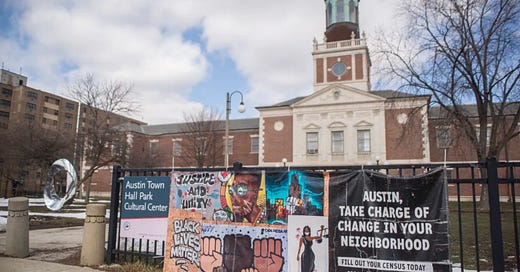Gladwell: "A Tiny % of Urban Blocks Accounted for an Overwhelming Number of a City’s Crimes"
Does it really look like that in Hey Jackass's homicide map of Chicago?
I wanted to return to analyzing the growing conventional wisdom that violent crime in American big cities is restricted to tiny geographies, a streetcorner here, an alley there.
For example, Malcolm Gladwell burbled in The New Yorker this month:
Malcolm Gladwell
A staff writer and the best-selling author of “The Tipping Point” and other books
Something that has always fascinated me about criminology is how much turmoil the field seems to be in. You would think that with phenomena such as crime and violence—which have been with us for as long as human beings have—we would have sorted things out by now. But we haven’t.
When, for example, David Weisburd and Lawrence Sherman made the observation a generation ago that crime was concentrated geographically—that a tiny percentage of urban blocks accounted for an overwhelming number of a city’s crimes, that those same few blocks remained violent year after year, and that this observation was true everywhere—their findings shocked many. People didn’t believe them at first. In the course of all the many centuries that researchers had studied and catalogued crime, it had never (until that moment) occurred to anyone to ask whether violence might be rooted in place, as much as (or more than) it is in people. The shock carried over into the hot-spots policing movement that grew out of the observation about crime’s concentration. Maybe you shouldn’t put the same number of cops on every corner of a city, the hot-spots advocates argued. Maybe you concentrate them in the places where the crime is. What? Seriously? The idea seemed incredibly subversive to the law-enforcement orthodoxy.
It’s not that some people are more shooty than other people, you see, because that would be racist, it’s that some places, the ones with the tragic dirt, are shootier than other places, the ones with the magic dirt.
Okay, well, let’s look at how geographically concentrated homicides were in 2024 in the city of Chicago.
Chicago is not exceptionally murderous, nor is it exceptionally safe. It’s a pretty average big city in terms of murders, except that it’s so huge that it virtually always leads the country in absolute total numbers of homicides. Hence, it’s useful for statistical analyses of homicides because its sample sizes are so large. Plus many Americans have been to the Windy City and have some vague sense of its social geography.
So, here’s the map from Hey Jackass! of all 611 homicides within the Chicago city limits last year
So, what do we see?
Paywall here.
Keep reading with a 7-day free trial
Subscribe to Steve Sailer to keep reading this post and get 7 days of free access to the full post archives.





